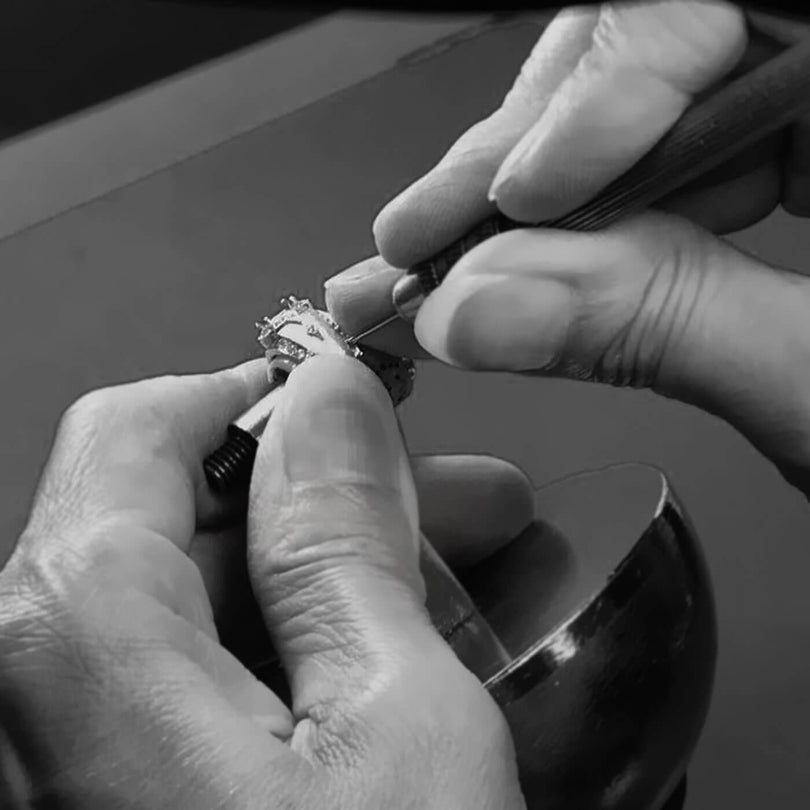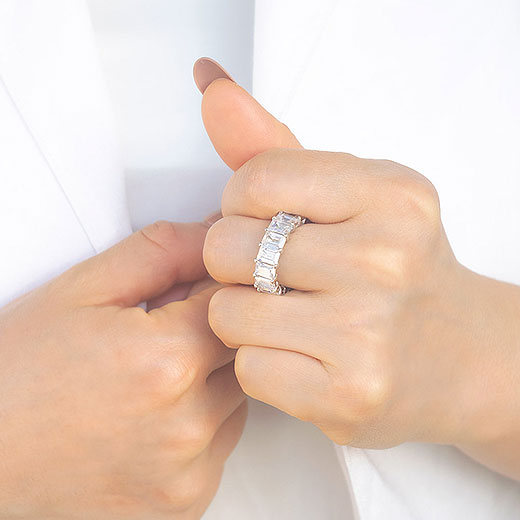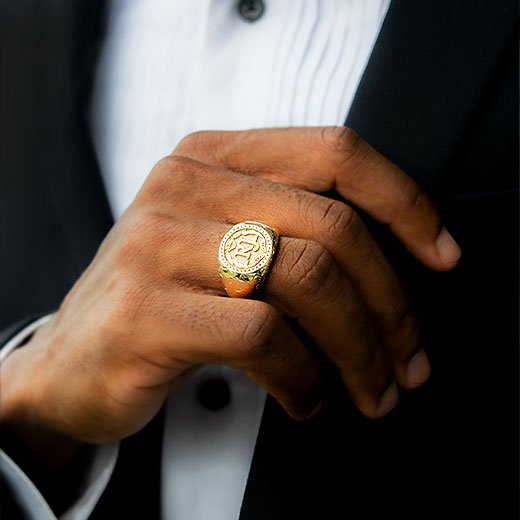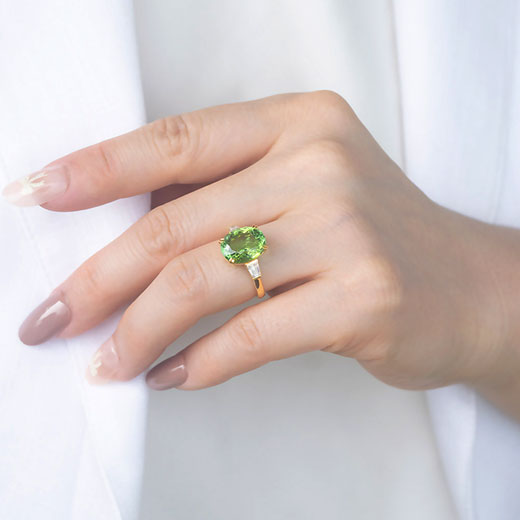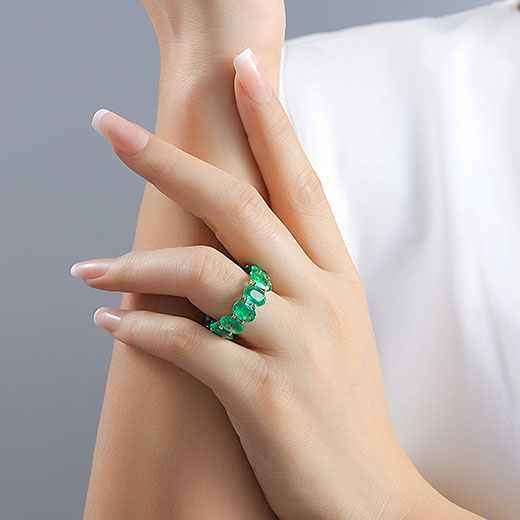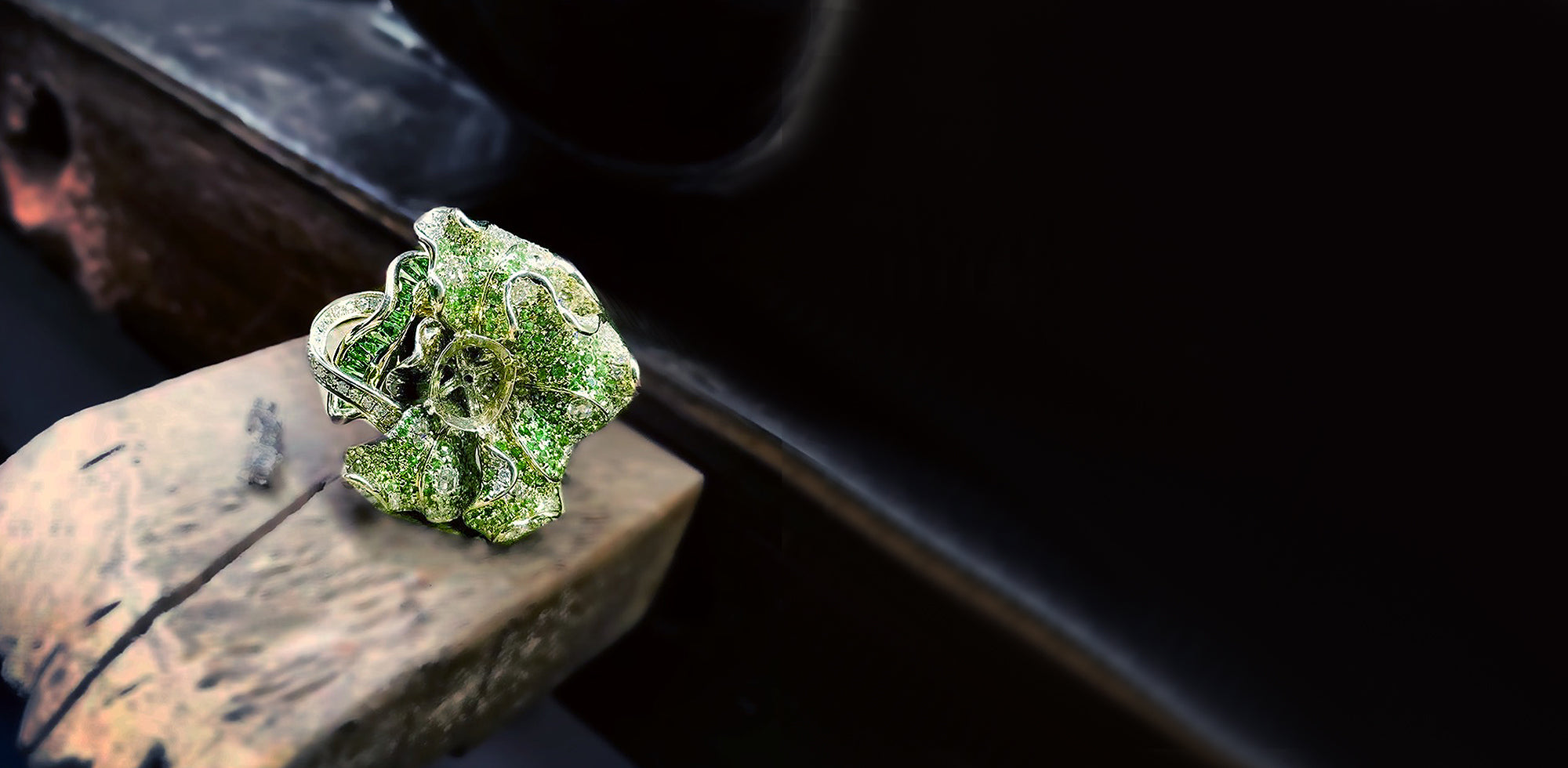Overview
Citrine, a popular yellow gemstone that belongs to the quartz family, is possibly the most popular yellow gem. Its name comes from the citron fruit, which looks like a large lemon.
Pure quartz is colorless, and the color of each form of quartz is determined by residues of various elements. Citrine's enticing sunny hues are due to the presence of iron. The colors of this appealing gemstone range from pale yellow to golden-orange to reddish-brown. The majority of citrine gems on the market today are actually other quartz kinds (amethyst, smoky quartz) that have been heat treated to get the ideal golden-yellow color.
Citrine does naturally occur, although it is extremely rare. Natural citrine is highly sought after because it lacks visible imperfections and color zoning.
This gemstone has been treasured for centuries due to its scarcity. It was particularly popular with the aristocracy. The ancient Romans employed citrine to adorn many forms of jewelry and intaglio art. Large faceted citrines were widely used in the early twentieth century, during the Art Deco period, for crafting beautiful jewelry items that accentuated the originality of that particular era. Its popularity has endured to this day, and the gem is coveted for its magnificence and splendor.
Natural citrine is uncommon, and Brazil is the world's leading producer. Uruguay, Scotland, Madagascar, Spain, the United States, and Russia are also key sources.
Symbolism
Citrine has been prized since ancient times for its ability to bring success and fortune to those who wear it. It is also known as the "success stone" because of these properties. Citrine is believed to promote abundance in all areas of life, particularly in business. As a result, it's commonly found in cash registers, thus the appellation "merchant's stone."
Many people believe that this brilliant gemstone radiates positive energy and aids mental clarity. Its capacity to remove all forms of negativity adds to its allure. Citrine never has to be "recharged" or "cleared" because of this feature. This bright gemstone, thought to contain the sun's power, represents positivity, growth, and happiness.
The ancient Greeks carved famous pictures into citrines, Roman priests used them to embellish rings, and Egyptians wore them as talismans in order to maximize the benefits of the stone. Natural citrine is still coveted today for all of the properties listed above.
Properties
Hardness and Strength
Citrine, a golden-yellow type of quartz, has a stunning lustre and sparkles vividly when sliced. It has a Mohs hardness score of 7 and is scratch resistant and hard enough to be used in jewelry. Citrine is a popular alternative to topaz and yellow sapphire since it is both radiant and cheap.
Treatment
Citrine has a translucent yellow color in its purest and most natural form. This fascinating hue is due to the presence of iron oxide in the quartz. A naturally light-yellow citrine is commonly referred to as "lemon quartz." Citrine is frequently mistaken for a yellow topaz due to its color.
Amethyst and smoky quartz are typically heat treated to get the desired golden-yellow tint, as natural and unprocessed citrines are extremely rare. Low temperature heat treatment (about 750 degrees Fahrenheit) produces a faint yellow color, but high temperature heat treatment (roughly 1700 degrees Fahrenheit) produces a deep orange to reddish-brown hue. This procedure is long-lasting and widely employed for color change that is permanent.
Grades
When natural and untreated, this gorgeous gemstone of citrine is considerably more valuable than other yellow-orange gemstones such as tourmaline, yellow sapphire, and yellow topaz . This gemstone is extremely rare in its natural state and is highly sought after by gem collectors and enthusiasts. The value of a citrine gemstone is determined by various factors:
Color
The most important criterion in determining the value of a citrine is its color. This gem's natural color ranges from pale yellow to golden yellow, with hints of smoky brown.
A citrine with a rich color and reddish tones is more valuable than a stone with lighter tones. Citrine with a reddish-orange color is sometimes referred to as 'Madeira' colored, after the famous wine. Because of their scarcity, even pale yellow citrines have become increasingly trendy in recent years.
Clarity
Citrine is a clear quartz with a vitreous luster. The majority of citrines are eye-clean, meaning there are no observable inclusions. Because merchants prefer citrines with a more uniform color, color zoning may reduce its value.
Cut
Citrine, like most quartz, comes in huge quantities, making it feasible to cut it into practically any shape. The most common cuts for this gemstone are round and oval, as they emphasize dispersion and color. The trillion, cushion, pear, square, and heart are some of the other popular shapes. Citrines with slight imperfections are employed to make beads, as well as sculptures and cabochons on rare occasions.
Carat
This brilliant gemstone is available in a variety of sizes, with stones weighing up to 20 carats being common. As a result, the carat size has little impact on the price of a citrine. Because of this, they are an excellent choice for distinctive jewelry designs.
Citrine can be classified into the following quality groups based on these factors:
AAAA-Heirloom
This group includes the top 1% of exceptionally rare citrines. These gemstones have the property of being eye-clean, which indicates they have no apparent imperfections to the naked eye. Citrines of heirloom grade have a particular deep golden color that makes them exceedingly valuable.
AAA-Best
The top ten percent of citrines fall within this category. These lovely stones are also flawless and have a brilliant golden color.
AA-Better
This comprises the best 33% of the available citrines in regards to quality. They have a yellow hue and minor flaws.
A-Good
This group includes the top 75% of available citrines with minor to moderate imperfections and a light yellow color.
Care Guides
-
Citrine is a durable gem, but it must be handled with prevent scratches and other damage. Here are a few safety tips for extending the life of this gleaming gemstone.
- To avoid contact and friction with other gems, keep citrine jewelry separately.
- It should not be worn while participating in sports, strenuous outdoor activities, or even household chores.
- When you've worn your citrine jewelry, avoid utilizing cosmetics like lotions and scents.
- Avoid using harsh chemicals, such as bleach and acid.
- Cleaning should be done with gentle soap and water, and the area should be wiped dry with a soft cloth.
- Citrine jewelry can be cleaned with ultrasonic cleaners.
- Steam cleaners should not be used since the heat can change the qualities of this gemstone.
- Keep your citrine jewelry out of the sun and away from excessive temperatures.
Citrine, the November birthstone, is enticing because of its warm, radiant tint. A little care and attention to this gem's upkeep will go a long way toward ensuring that it continues to captivate hearts for coming years.

